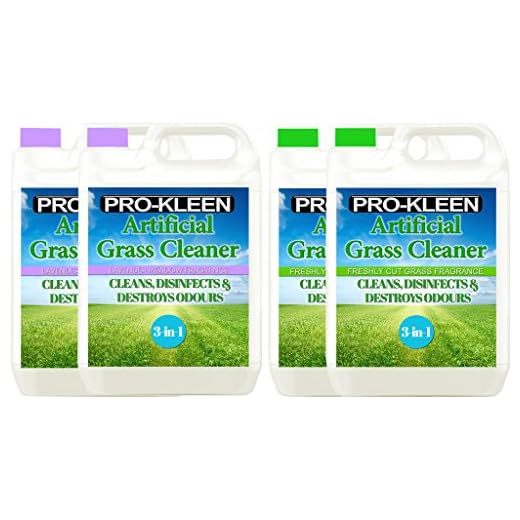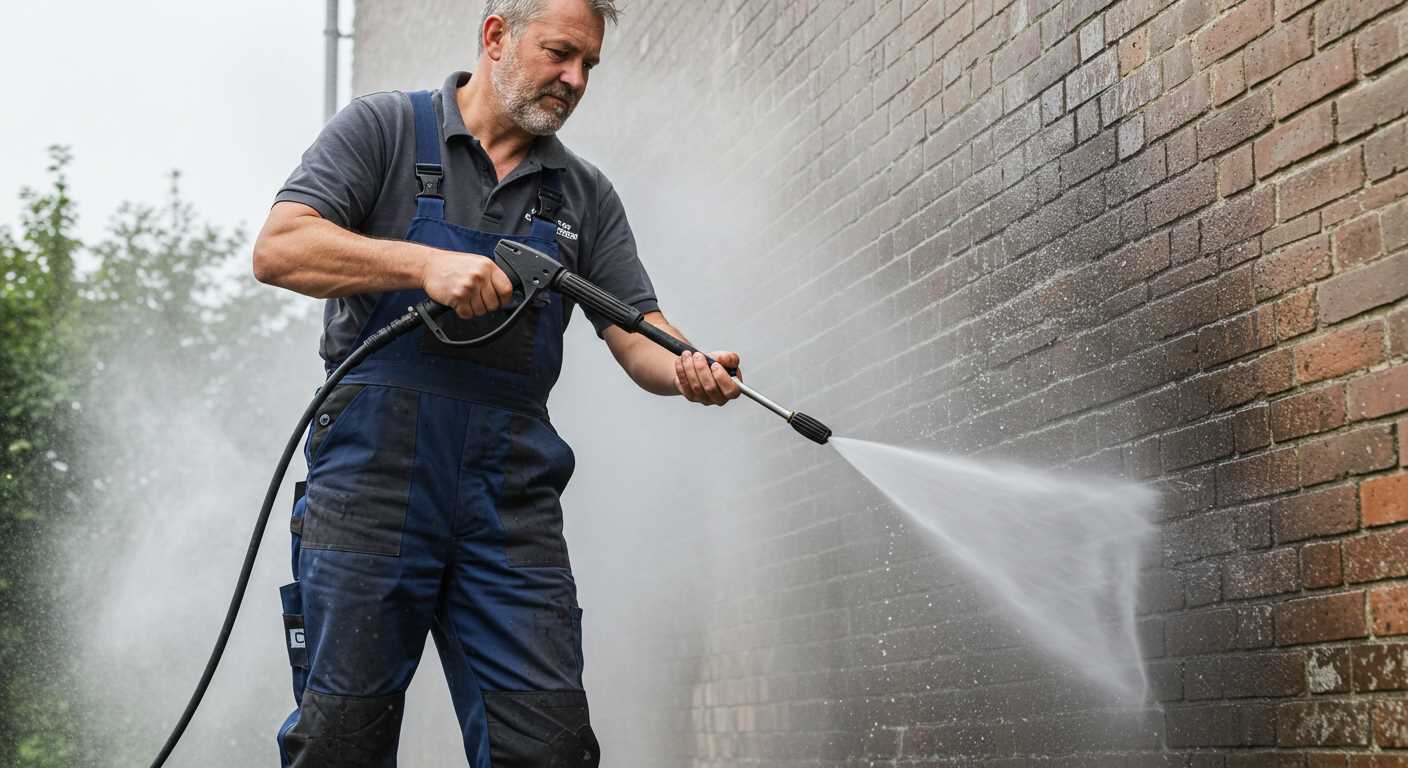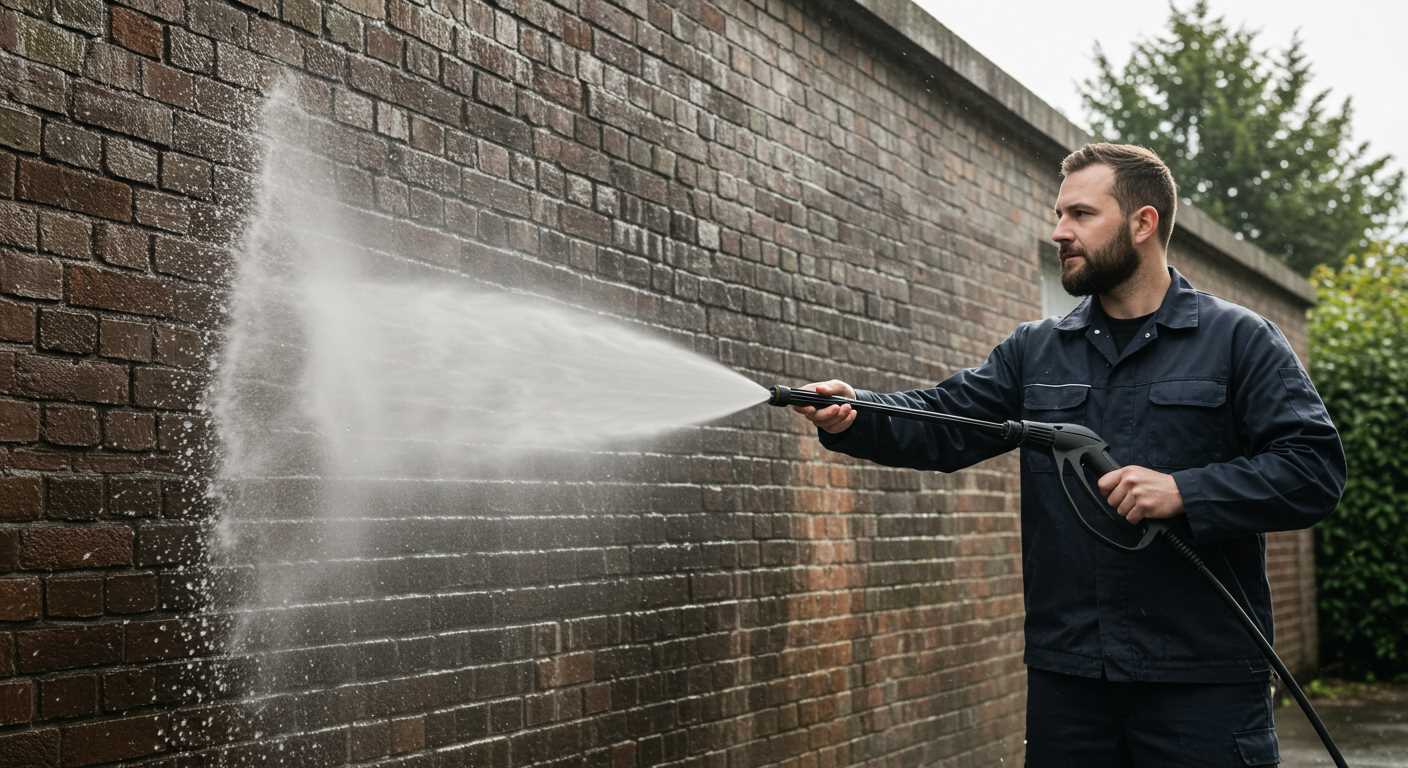



Absolutely, employing a high-pressure cleaning device on synthetic turf is not only feasible but can be advantageous for maintaining its pristine condition. It effectively removes debris, organic matter, and built-up grime that can accumulate over time.
When opting to clean synthetic grass with a high-powered cleaner, maintaining a distance of at least 12 inches from the surface is critical. This distance prevents potential damage to the fibres while ensuring thorough cleaning. Additionally, a nozzle with a spray pattern that disperses water broadly is preferable over a concentrated jet to avoid any risk of harming the blades.
Always remember to start with a lower pressure setting, gradually increasing it if necessary, allowing for controlled cleaning without unintended consequences. Regular maintenance not only enhances the appearance of your synthetic lawn but also extends its lifespan, ensuring it remains lush and inviting.
Understanding the Composition of Synthetic Turf
Direct interaction with synthetic surfaces can cause concerns regarding the materials used in their construction. Synthetic turf typically consists of three main components: the fibres, the backing, and the infill. The fibres are often made from polyethylene, polypropylene, or nylon, each offering different levels of durability and realism. Polyethylene is common for its softness and appearance, while nylon is more robust and can withstand heavy foot traffic.
The backing, which secures the fibres in place, is usually crafted from a combination of primary and secondary materials. This dual-layer structure ensures longevity and resistance against tearing. A polypropylenes or urethane base is frequently utilised to provide strong support and enhance drainage capabilities.
Infill serves multiple purposes, including stabilising the fibres, providing cushioning, and promoting drainage. Common infill materials include silica sand, rubber granules, or a mixture of both. The choice of infill impacts not only the feel of the surface but also its performance characteristics, such as temperature regulation and shock absorption.
Understanding these components is crucial in determining the best maintenance methods. Ensuring optimal preservation of the surface will extend its life and maintain its aesthetic appeal. Regularly checking for wear and tear, and selecting appropriate cleaning methods based on these materials will prove beneficial in maintaining the appearance and functionality of the product.
Benefits of Cleaning Synthetic Turf Regularly
Regular maintenance significantly enhances the lifespan and appearance of synthetic turf. Cleaning helps to remove debris such as leaves, dirt, and pet waste, which can accumulate over time, leading to potential wear and discolouration.
Moreover, consistent upkeep ensures that the material retains its original texture and colour. By eliminating stubborn stains and odours, one creates a more pleasant environment for activities, whether for pets or children.
A clean surface reduces the risk of pests and fungi developing. Regular washing can help mitigate these issues, promoting a healthier area for play and enjoyment. Additionally, taking care of the synthetic surface aids in preserving the integrity of the infill material, which supports the blades and provides cushioning.
Lastly, maintaining a clean turf surface can improve drainage, preventing water pooling and promoting swift drying. This aspect is especially beneficial during heavy rainfall, as it reduces potential damage and keeps the area functional and visually appealing.
Recommended Pressure Settings for Washing

For optimal results while maintaining synthetic turf, I recommend a pressure setting between 1200 to 1500 PSI. This range effectively removes debris without causing damage to the blades or infill material.
Consider these factors when adjusting pressure:
- Surface Type: If the grass has a heavier accumulation of dirt or moss, temporarily increase the pressure to a maximum of 1500 PSI. For lighter cleaning, stick around 1200 PSI.
- Nozzle Selection: A wide-angle nozzle (25° or 40°) is ideal for broader coverage and preventing damage. Avoid narrow nozzles that focus pressure too intensely.
- Distance: Maintain a distance of at least 12 to 18 inches from the surface while cleaning. This helps to distribute power evenly, minimising the risk of damaging the fibres.
Testing a small, inconspicuous area first is wise to ensure compatibility and to gauge the effectiveness of the chosen settings. Always adjust as needed based on the specific condition of the turf. Regular maintenance with the right settings enhances the longevity and looks of the surface.
Step-by-Step Guide to Using a Pressure Washer

Before starting with the cleaning process, ensure the area is free of debris, toys, and other items that could obstruct the job.
Step 1: Equipment Preparation

Assemble your machine, adhering to the manufacturer’s guidelines. Check the water supply and connect it securely, ensuring there are no leaks.
Fill the detergent reservoir with a suitable cleaner, if necessary. Selecting the correct product is crucial for effective grime removal without harm.
Step 2: Pressure Configuration

Adjust the settings on the machine to a low-pressure option to avoid damage. Start at a distance of about 24 inches from the surface. Gradually test the impact, moving closer if required. Monitor for any signs of distress.
For stubborn spots, increase the pressure incrementally while keeping a steady hand. Always maintain a consistent angle to distribute the force evenly.
After completing the wash, ensure all liquid is drained from the system and store the unit in a safe, dry location. Regular maintenance extends the life of the device.
Common Mistakes to Avoid When Cleaning

To preserve the longevity and functionality of synthetic turf, avoiding several common pitfalls is vital during the cleaning process.
One frequent error is selecting an excessive water output setting. Higher levels can cause unnecessary wear or displace the infill material within the turf, impacting its feel and performance. It’s recommended to keep the water output gentle to prevent any damage.
Another mistake is neglecting debris removal before using cleaning equipment. Failing to clear larger objects, like leaves and twigs, can result in clogging or impairing the washing process. Always clear the surface thoroughly beforehand.
Many individuals also underestimate the importance of consistency. Regular maintenance, including systematic cleaning, is critical. Infrequent cleaning can lead to the accumulation of dirt and grime, which may require more intensive effort to detach later.
Avoid using harsh chemical cleaners, as these can deteriorate the fibres and colours. Instead, opt for mild detergents formulated for synthetic surfaces, ensuring they support both cleanliness and integrity.
The timing of cleaning also matters. Operating under direct sunlight can cause rapid evaporation of water, making it less effective. Early mornings or late afternoons are ideal for these tasks.
| Mistake | Consequence | Solution |
|---|---|---|
| High water output | Damage to turf and infill | Use gentle settings |
| Ignoring debris | Clogging and ineffective cleaning | Pre-clean to remove debris |
| Inconsistent cleaning | Grime build-up | Establish a regular routine |
| Harsh chemical cleaners | Damage to fibres and colours | Mild, turf-safe detergents |
| Cleaning in direct sunlight | Rapid evaporation, less effective wash | Clean during cooler hours |
Alternative Cleaning Methods for Synthetic Turf

The option of maintaining synthetic turf extends beyond high-pressure equipment. For effective upkeep, consider these alternative techniques:
Brooming is an everyday approach. Utilising a stiff bristle broom, gently sweep the surface to remove debris such as leaves and twigs. This helps prevent the accumulation of dirt and maintains a neat appearance.
Leaf Blowers serve as another efficient tool. Employing a blower streamlines the removal of fallen foliage, providing a quick clean-up without disturbing the fibres. Position the nozzle at an appropriate angle to avoid displacement of infill materials.
Water Hoses are invaluable for rinsing the surface. Use a regular garden hose equipped with a spray nozzle for a gentle wash, sufficient for light dirt and dust removal. Adjust the flow to avoid excessive force that might impact the turf’s integrity.
Vinegar Solutions play a significant role in sanitising and deodorising synthetic surfaces. Mixing equal parts white vinegar and water provides a solution to eliminate odours and minor stains. Apply it using a spray bottle, allowing it to sit briefly before rinsing.
Foam Cleaners offer an alternative for stubborn stains. Many cleaners designed for synthetic surfaces contain non-toxic ingredients. Apply foam onto the stain, leave it to work for a few minutes, and wipe with a soft cloth or sponge.
Regularly inspecting turf for signs of wear or damage is essential. This vigilance paired with periodic cleaning can enhance the longevity and visual appeal of the surface. Make sure to address any issues promptly to prevent further complications.
Incorporating these practices ensures a clean and well-maintained outdoor area, fostering an inviting atmosphere for all users.
Maintenance Tips for Long-lasting Synthetic Turf
Regular brushing is essential; I recommend using a stiff-bristle broom or a dedicated turf rake weekly. This prevents matting and helps maintain the upright position of the fibres, contributing significantly to its natural appearance.
Keep debris off the surface. Leaves, twigs, and dirt can accumulate, leading to discolouration and potential damage. I suggest cleaning off any organic material promptly to avoid staining and unwanted growth.
Infrequent Deep Cleaning
Every three to six months, a deep cleanse is beneficial. This can be accomplished by hosing down the surface with water, combined with a mild detergent if necessary. Always rinse thoroughly to prevent soap residue build-up, which can attract dirt.
Check for Damage
Inspect the turf regularly for tears or loose seams. Prompt repairs can avoid more significant issues down the line. I recommend keeping a repair kit handy, consisting of adhesive and spare patches, for quick fixes.
Drainage is critical; ensure that rainwater can easily escape to prevent pooling. It’s advisable to position the turf on a properly prepared base with adequate drainage channels to facilitate water run-off.








